Last Updated on March 6, 2018, 11:27 AM | Published: March 6, 2018
A slow, but steady controversy is brewing in Oklahoma City Public Schools over leaked plans about drastically increasing the number of split-grade classrooms in the district.
The plan is to increase the number of split-grade classrooms from 18 to 57 in the 2018-2019 schools year affecting around 1700 elementary students.
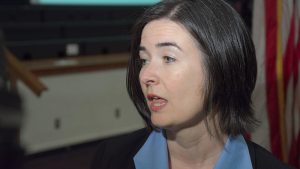
Rebecca Kaye, acting superintendent, is pushing the idea with talk about low state budget support and class sizes.
And the structure of her argument for the change is similar to the one she and former superintendent Aurora Lora made winter of 2017 for an unsuccessful attempt to close several of the smaller elementary schools on the north side.
Numbers fix
Kaye refers to classrooms with more than one grade being taught as “multi-age” or “multi-grade” classrooms. But the common term is split-grade. Some parents and a few board members have referred to the concept as “blended classrooms.”
Simply put, the idea is to have a classroom populated with students from two different grades.

For example, if a school’s total number of third-graders had enough for two and one-half classes, and the fourth grade had about the same numbers, one of the classrooms would be a split class between the extra third graders and extra fourth graders.
The practice has been used in the past in OKCPS and other districts to keep from having extraordinarily small classrooms alongside extraordinarily large ones.
It’s a practice that works for efficiency on paper but is seldom liked by parents in any district unless there is a significantly strong, long-term effort to chose and train teachers for the practice.
Concerned board members
While other board members expressed concern over the plan for rapidly increasing the number of split-grade classrooms, Gloria Torres and Mark Mann expressed the most explicit doubt.

Both expressed concern because they did not know of any plan to select teachers for a job that requires two sets of learning objectives for each day – one for each grade being taught in the same classroom.
They argued there should be training for teachers and a well-thought-out method for determining which students would do better in such an arrangement.
While Torres, a former school principal in the district, chose to engage in a Q&A with Kaye, Mann made direct statements.

“We have no rubric for how we will select which kid will go into a blended classroom,” Mann said.
“We have no professional development specifically for those features.”
“And, we’ve had no system in place to do follow-up and measure success and get feedback from those teachers.”
At that point, visitors broke into loud applause.
Plan exposed
According to some sources in the district, principals were told in February about a plan to increase the number of split-grade classrooms and to start making plans for staffing.
They were also cautioned by central office staff to keep the plan quiet.

But, when active PTA leaders in Cleveland and Wilson elementary schools caught wind of the plans over the weekend, parents started raising concerns.
Kaye responded by agreeing to meet 30 minutes before the board meeting with anyone who wanted to know more about the plan.
In that meeting, Kaye focused on the formula she and former superintendent Aurora Lora developed to determine levels of staffing according to what schools “earn” through their enrollment.
Familiar playbook
It is the same formula Lora and Kaye used about a year ago to try and close several of the smaller northside schools for this school year.
The key concept in the plan was that schools “earn” extra teacher positions and staff in the formula according to their student enrollment count.
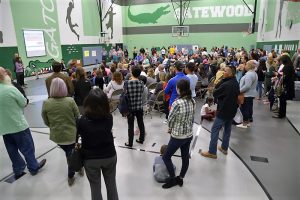
But, if the number went below a certain threshold, the school would need to be closed.
Both went on a week-long gamut of public meetings attempting to rationally explain their system.
Free Press covered the issue:
- Gatewood, Edgemere parents resist school closures
- No school closures, but “tough choices” this year says OKCPS supt
They abandoned those plans after considerable resistance from parents and some interested community members.
At the time, both seemed surprised that parents did not agree with them.
Same playbook
Kaye continues to use the same concept in determining which schools will have split-grade classes and how many.
She also continues to use the same term – “earn” – when talking about the number of staff each school should have according to the formula.
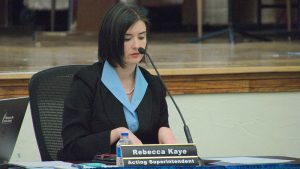
Reduced funding from the state is what Kaye points to as the problem for the district as it struggles to make ends meet.
Yet, critics point to an extra layer of administrators in the district called “instructional leadership directors” as one example of how the district is spending too much on a top-down administration.
In some instances, ILDs have far less experience than the teachers they are supposed to be coaching.
And the central office has pushed expensive consultations with outside specialists that have racked up hundreds of thousands in fees being spent by the cash-strapped district.
Parents speak out
During public comments in the board meeting Monday, several parents mostly from Cleveland and Wilson schools, spoke to the board pleading for the district to take an extra year preparing for split-grade classrooms.

Ellen Pogemiller, a Wilson parent, took part of her allotted three minutes to urge more careful preparation and to explore all of the options instead of just one.
But, she also spoke out about putting pressure on the Oklahoma Legislature and not letting legislators off the hook when it comes to school funding.
A theme developed among the parade of parents who spoke: Look at more than just one option for how to fix a financial problem.
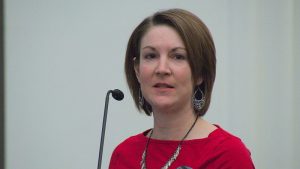
Kaye agreed earlier in the meeting that the motivation for increasing from 18 to 57 split classrooms was financial and not instructional.
After the meeting, Free Press visited with several of the parents who had come to the meeting out of concern about the plan.
“I think 56 classrooms are a huge amount of classrooms to throw this on,” said Ellen Pogemiller. “If it’s a model they think will be successful, then it should be done incrementally and show its value.”
Julie Watson was more blunt and pragmatic.
“I think that if we want something the parents are against, the teachers are against, that principals are against and that the board is against, I don’t think that’s the best way to move forward.”
Parent Sara Jordan directly challenged the rationale Kaye gave for the idea.
We heard a lot about math tonight. Until we can take the numbers of 50% and 75% of kids with high needs or mental illness and factor that into how we are going to split up classrooms, and until we take the number of years teachers have taught and the numbers of years that they have trained and factored that into the math, I think the math is irrelevant.
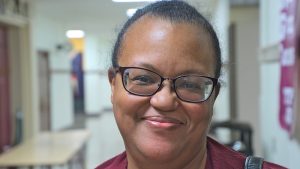
One of the Cleveland parents, Shamon Pickens, summed up the general feeling a number of parents have had in the district under the last several superintendents.
We asked: Has the district gone through enough of a process on this?
“No.”
She paused to think, then said, “never.”
Founder, publisher, and editor of Oklahoma City Free Press. Brett continues to contribute reports and photography to this site as he runs the business.










